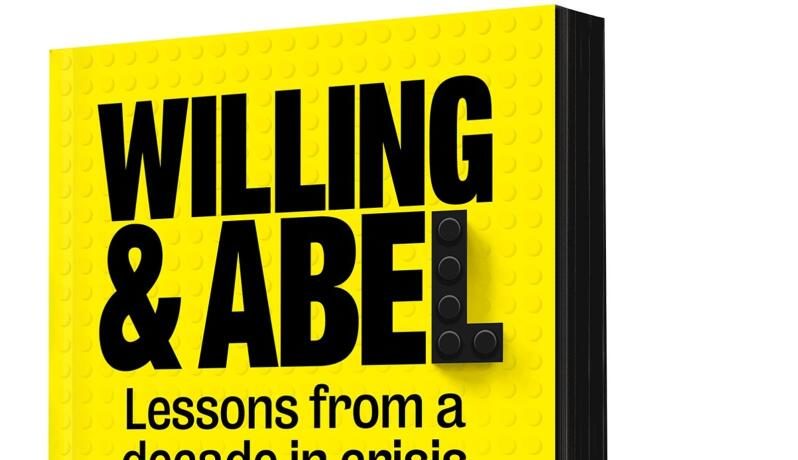It’s a well-known fact that some politicians and editors are influential in society. Advertising executives however, are taken for granted.
If there’s one thing that stands out in the book by Mike Abel, advertising guru and founder of South African ad agency M&C Saatchi Abel, it’s the fact that ad executives have a massive influence.
In his latest book, Willing & Abel – Lessons From a Decade in Crisis, which chronicles his professional life and the birth of M&C Saatchi Abel, there are the scenes of communication campaigns that had a significant impact in South Africa.
One such campaign is the #DefeatDayZero campaign which came into being due to imminent Water Day Zero, the day on which Cape Town was anticipating dry taps due to water shortages. The book highlights the key role that was played by Mike Abel, in crafting the communication plan, in collaboration with the then leader of the Democratic Alliance. South Africans will recall that this partly led to a conflict at the City of Cape Town as to who should lead the water shortage campaign.
Cape Town defeated day zero and according to the book, this is partly due to a communication campaign that was designed at M&C Saatchi Abel.
Another campaign that illustrates the power of ad agencies and their executives is the #RightMyName campaign which was designed for Nandos during Human Rights Day. The execution of the campaign included a takeover of a Sunday newspaper with African names which were underlined in red in the same way that a computer underlines words that are deemed ’incorrect’.
The campaign identified how technology in South Africa was not keeping up with local communities and how the devices we use every day seem to be possessed by this colonial being that only allows English names to be input into the device dictionaries by American software companies. The campaign tried to address the issue of names that are not Anglo-Saxon being considered a mistake. The campaign focused on updating software companies’ dictionaries.
The book points out that as part of the RightMyName campaign a video was developed which featured a plain white word document and some real-time typing:
Hi Tshedimoso (underlined in red)
Hi Kobus (underlined in red)
Hi Nasaal (underlined in red)
Hi Tshilidzi (underlined in red)
The aim of this campaign was to create a downloadable database that could be added to device dictionaries.
The book also provides an interesting account of challenges experienced by the Ad agency and its founder during the past 10 years. It however falls short of delving deeper into the business challenges experienced by Mike and the agency in building the entity. One such account which hopefully will come through in his next book is Mike’s perspective about Creative Spark acquisition. An agency (which is now a digital agency within M&C Saatchi Able stable) which was founded by the late Matthew Buckland does not feature in the book. People in the industry only know Matthew’s side of the story which is not rosy about his experience based on his book (So You Want to Build A Startup). According to Mike, one lesson from that acquisition is that “do your homework before acquiring a company”.
This is a book that business leaders should read to understand what goes behind the scenes of adverts that we come across in our newspapers and other media outlets. It’s a book you should read to understand the mind of an Ad executive and the thinking that goes behind communication strategies in South Africa.
Wesley Diphoko is the Editor-In-Chief of Fast Company (SA) magazine.







